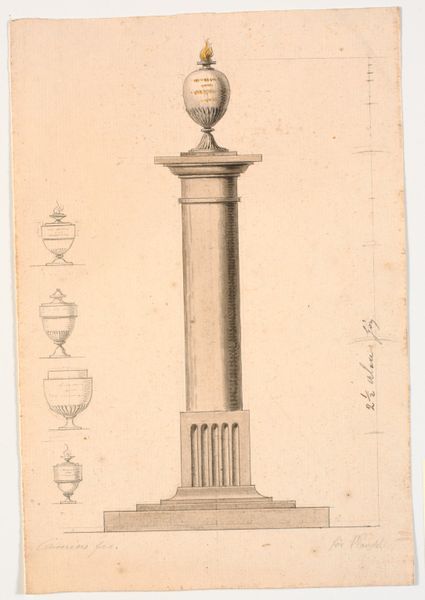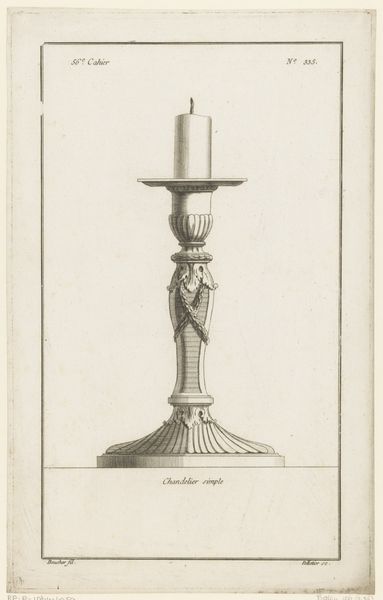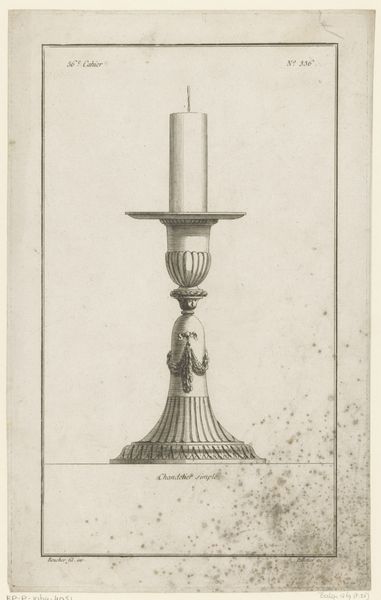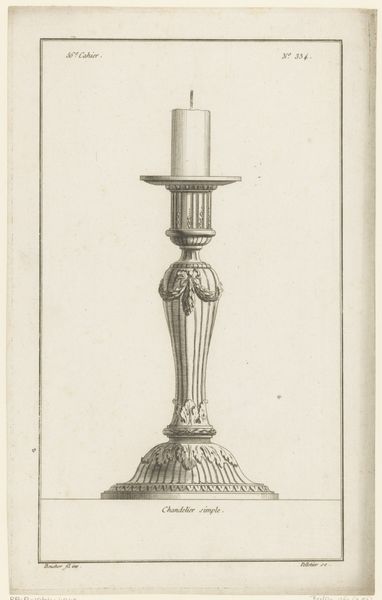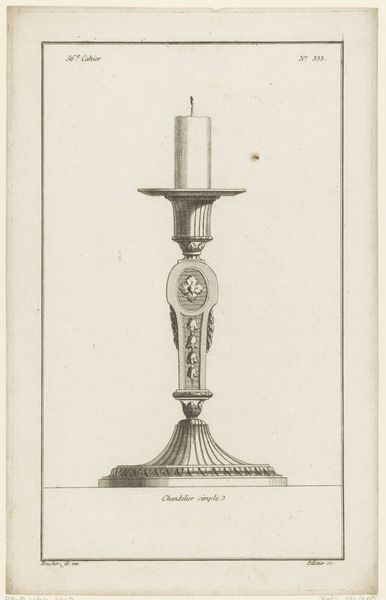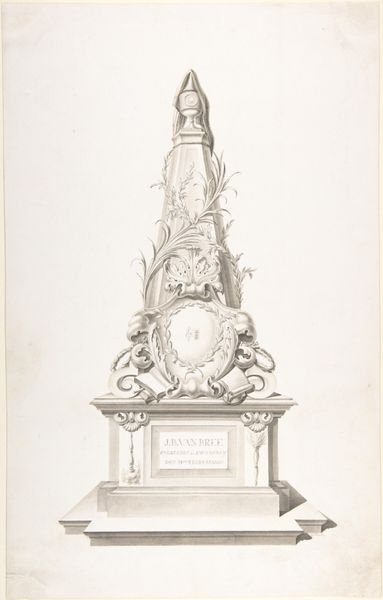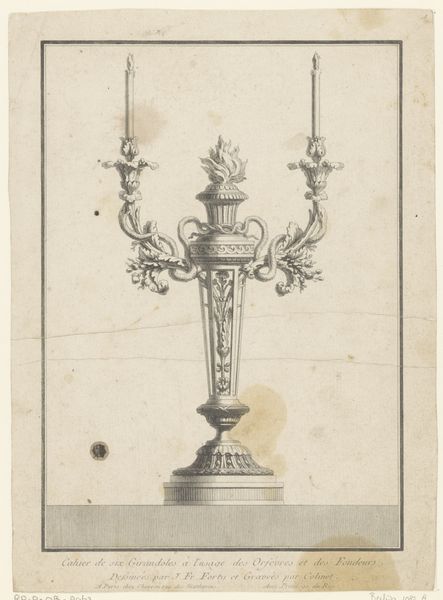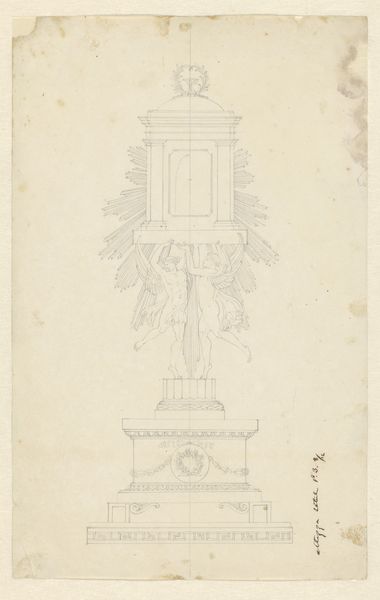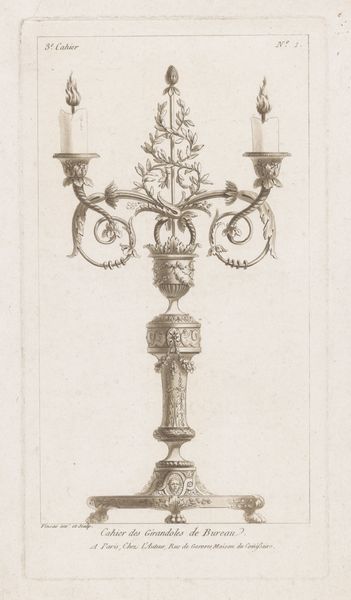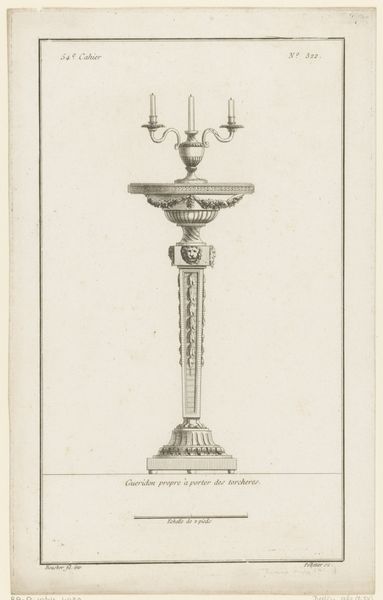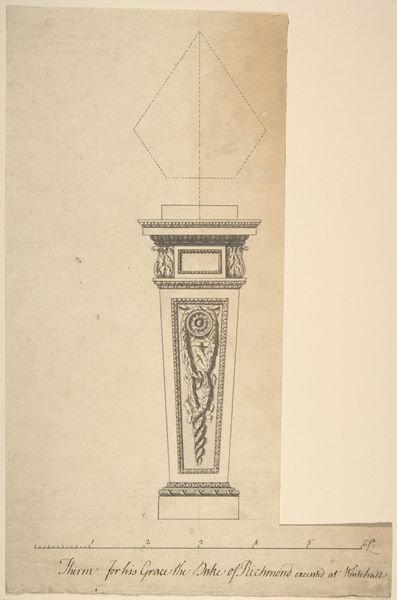
drawing, print
#
drawing
# print
#
decorative-art
Copyright: Public Domain
Curator: Let's take a moment to appreciate this design for a candlestick from 1839, currently held at the Metropolitan Museum of Art. The piece is by Adolph-Jean LaVergne and it’s rendered in ink and wash, with the crisp lines characteristic of architectural drawings. Editor: It possesses an austere quality, doesn't it? The limited tonal range and precise lines give it a somewhat detached feel, like a mathematical equation rendered in ornamental form. The way the artist articulated each form is so clean. Curator: Precisely! I see this piece, like much decorative art of the period, as reflecting the social aspiration of the growing middle class to emulate the lifestyle of aristocracy and nobility, often appropriating symbols that stood for power and status. For instance, the ram heads, an appropriation from the Roman period where the animals stood as symbols of power. Editor: It's the almost relentless symmetry that holds my gaze. Look at how each decorative element is meticulously balanced against its counterpart, and it certainly reinforces that power dynamic that you're mentioning. Do you think there's also a play of contrasting textures here? The smooth columns versus the more elaborate vegetal patterns, perhaps to draw focus to a singular component. Curator: Undeniably. In terms of societal roles, light and its vessels held a certain cultural power in pre-electrification times. The elaborate nature of the candlestick signifies the prominence afforded to illumination, signifying wealth and the resources required for social events. Editor: Indeed. One could explore how this singular art object relates to ideas found in other designs of the era; do other objects share similar stylistic themes or design ideas? Or, when compared to other prints of the period, how do its formal features set it apart, what ideas and feelings would it stimulate in viewers of that time? Curator: Seeing the piece through the lenses of class, the social implications are still being understood today, revealing complex dynamics of status and aspiration that remain potent. Editor: I'll certainly be looking at the piece in new light. I can appreciate the candlestick as something beyond just aesthetic representation. Curator: Yes, the object definitely moves beyond form. It tells the viewer much about social status, values, and how societal constructs change across generations.
Comments
No comments
Be the first to comment and join the conversation on the ultimate creative platform.

